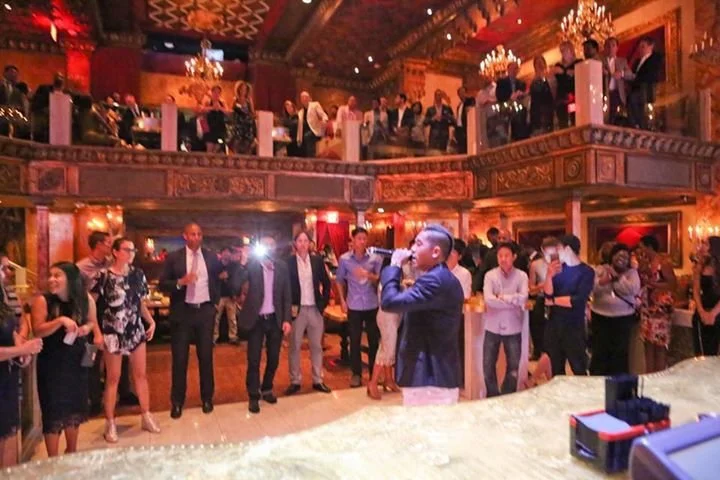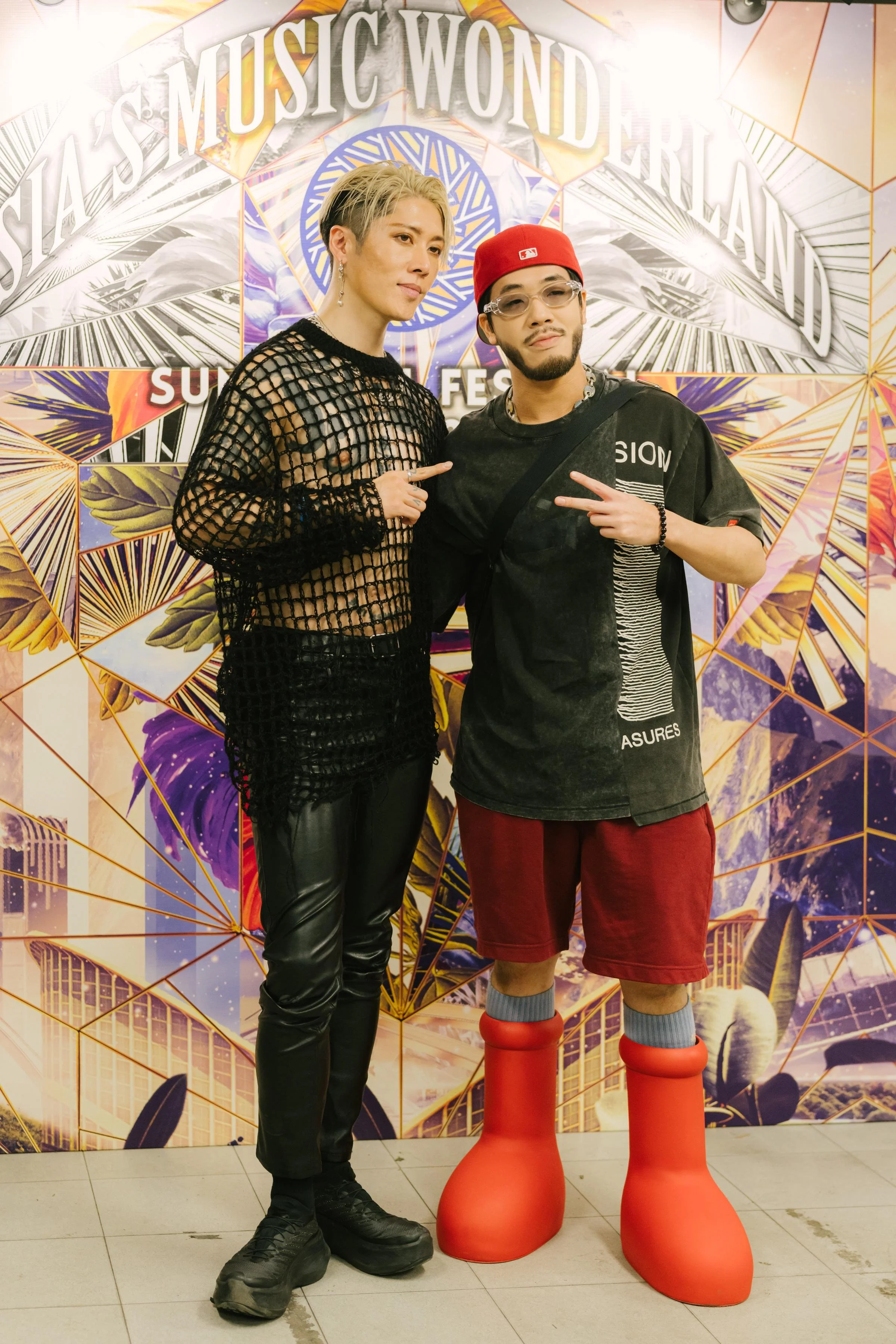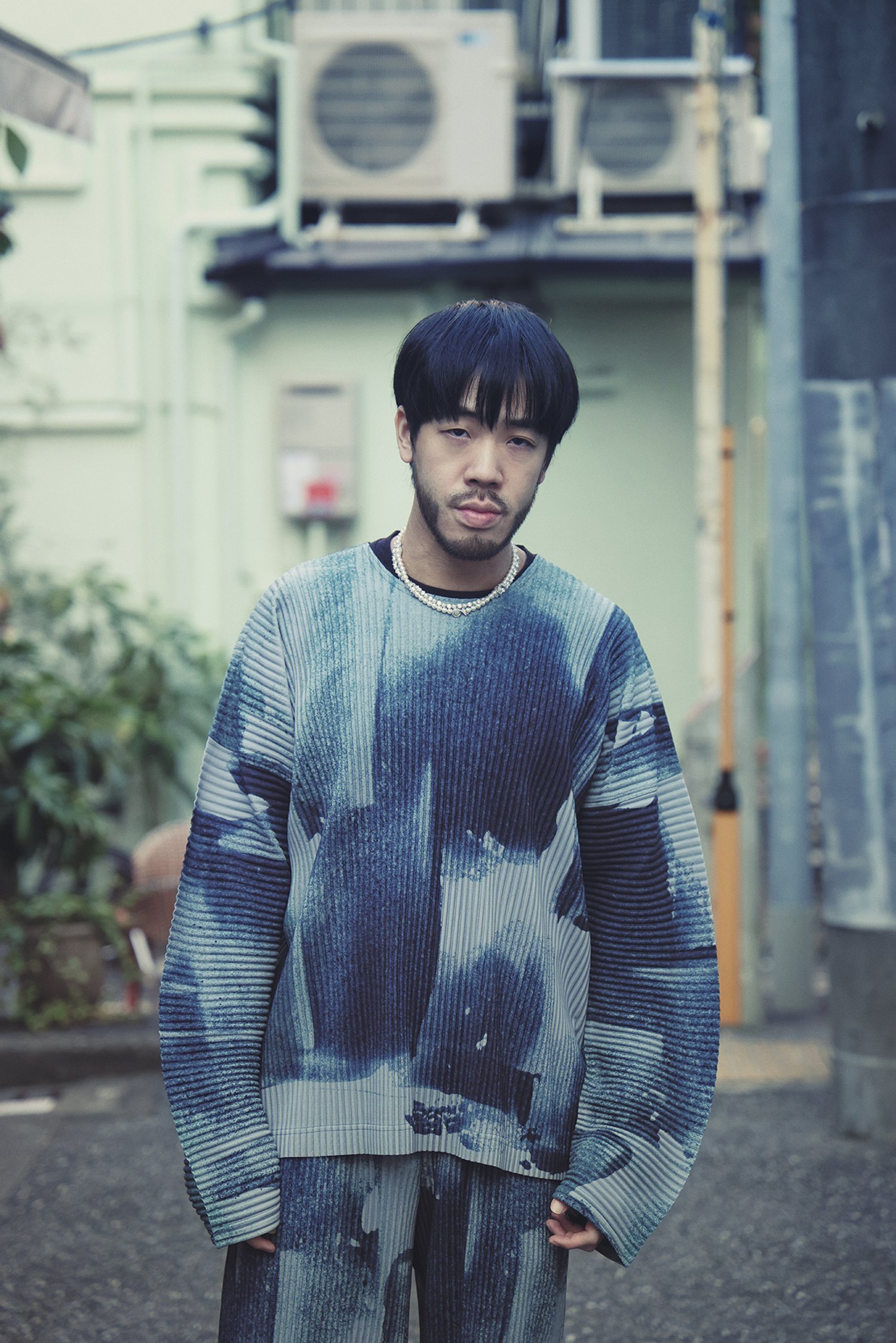
ShiGGa Shay
Flow State: Inside ShiG’s Multilingual Hip-Hop Universe
Text & Photo: Atsuko Tanaka
Born and raised in Singapore, rapper SHIGGA SHAY has built a career that bridges worlds — from the streets of Queenstown to stages across Asia and even the White House. Known for his multilingual verses that switch effortlessly between English, Mandarin, Hokkien, and Singlish, Shig’s story is one of hustle, heritage, and heart. On his recent trip to Tokyo, he sat down with us to talk about his journey, creative evolution, and how hip-hop continues to shape his identity.
So this is your second time in Japan, right? The first time was about six years ago?
The first time I technically came was as a kid, but it was just a transit through Narita on the way to LA. My dad took me to walk around for a few hours. Tokyo itself was 2017.
What was your first impression of Tokyo?
Tokyo really inspired me creatively, the structure and rhythm of the city sparked so many ideas. From Chiyoda-ku to Harajuku, each area has its own soul. Just like how different places in Asia each have their own unique story.
And this time, what brought you back?
Mainly to shoot a video with JP the Wavy. We’ve known each other since 2017 and have worked together on multiple occasions.
You grew up in Singapore. How would you describe the city now?
Singapore’s evolving fast. There’s a new wave of creative energy, from rappers to filmmakers, designers to musicians. All pushing boundaries in their own ways. The city’s always been known for business and finance, but I feel like now the arts scene is starting to grow and slowly getting the spotlight they deserve. It’s an exciting time to a creative in Asia.
Tell me about your childhood.
I grew up moving around a lot because we didn’t have a fixed home. My dad worked as an in-flight supervisor, and my mom was a hairstylist. We didn’t have much money, but we had love — and that meant everything. I was an only child. I started rapping for fun at nine, inspired by Eminem’s “Cleanin’ Out My Closet” and “Lose Yourself.” I remember getting goosebumps — it felt like someone was speaking straight to my soul. By fourteen, I knew I wanted to do it for life.
Your parents supported that dream?
My parents didn’t know anything about the industry nor were they connected in any way, but they tried. They just wanted to support my dreams, whatever it might’ve been which is something I’ll always be grateful for. My dad took me to a club for the first time when I was 14, not to party, but to help me try and get a foot into the music industry somehow. He told everyone, “My son’s a rapper!” even if he didn’t know what that really meant.
That’s so sweet! How did you start making music seriously?
I saved up for a cheap mic, and my mom bought me a small Yamaha mixer. I recorded my first mixtape, “ShiGGa Shay in the Building” when I was sixteen — seventeen tracks, all done at home. I uploaded it to YouTube, Bandcamp, and MySpace, and people from around the world started noticing. Then WorldStarHipHop featured me as their “Unsigned Talent of the Week.” That was huge — it opened doors internationally before people in Singapore even knew who I was.
When did people at home start paying attention?
Around 2013. I dropped my first Mandarin-Singlish track, “LimPeh” mixing Hokkien, Mandarin, English, and Malay. That’s when Singapore began to recognize me. Then came collaborations with artists like Stefanie Sun, Jay Park and MJ116. In 2016, I got invited to perform at a White House after-party when Obama was president. That was surreal.
You’ve performed all over. What was the biggest turning point for you?
Definitely 2023. ColorsxStudios invited me to perform “Rainy Days,” a song I did in Mandarin that sampled a Hokkien folk song called “Tien Hei Hei.” It was the first time Colors featured a Mandarin song. That performance grew across Asia and I also got the opportunity to write and direct the music video of the theme song for Singapore’s National Day Parade. That year changed everything. It made me reconnect with my roots.
Is it different writing in Mandarin compared to English?
Very. English is straightforward; Mandarin is layered. One word can hold many meanings. It took years to learn how to express myself authentically in another language. But I like the challenge. It’s like starting a new chapter.
You’ve seen hip-hop scenes across Asia grow. How do you see the changes?
When I started, there were barely any rappers in Singapore. Now there’s a whole new generation of talented rappers and producers. Across Asia it’s been amazing to watch the growth. In Malaysia, you’ve got Joe Flizzow, SonaOne; in South Korea, Jay Park, pH-1, Sik-K; in China, Masiwei & the Higher brothers; in Thailand there’s F Hero, Thaitanium, Young Ohm, and in Japan, so many dope artists like JP the Wavy, OzWorld, Awich. Social media changed everything, it gave everyone a voice. But just because everyone can rap doesn’t mean everyone’s a rapper. It’s the same as how everyone can take photos, but not everyone’s a photographer.
Are there any Japanese artists you’d like to collaborate with?
Too many. Miyavi, for sure. We actually met in Singapore earlier in 2024. He saw me perform at an event and invited me to guest on his show the next day. No rehearsal, just pure energy. That moment was wild.
If you had to describe your music style in one word, what would it be?
“Flow.” Like water — formless, adaptable. It can be soft or powerful. In rap, the flow brings lyrics to life, and in life, being in flow keeps you grounded.
What projects are you working on now?
Two albums. One in Singlish, one in Mandarin. I’m also dropping a track featuring pH-1 and JP the Wavy. It’s in Singlish, but pH-1 raps in Korean, Wavy raps in Japanese, and I mix English, Singlish, Mandarin, Malay and Tamil. The 4 main languages in Singapore. I hope to introduce Singapore culture to the world.
Do you usually work with the same producers?
Mostly, yeah. My main producer is from the UK. We met online when I was seventeen. I also work with producers in Taipei, Shanghai, Chengdu, Thailand, and Singapore. Technology made it easier, but real producers, the ones who understand you are still rare.
Do you listen to other kinds of music too?
II love live and orchestral music — strings, horns, everything. I used to play in the school orchestra when I was young, so I really appreciate musicality. I also love traditional music, they all have a meditative quality that helps me focus.
What’s a word you use often these days?
“Ok Can.” It’s Singlish expression — you can use it for everything. “Can we meet?” “Can!” “How’s the food?” “Okay, can.” It’s simple but powerful and it captures the Singaporean spirit.
What does hip-hop mean to you?
Hip-hop, to me, is life. It’s taught me so much — so many lessons that no teacher could ever teach. It’s raised me in ways nothing else could, and it’s given me lifelong friends who’ve grown alongside me. I’m truly grateful for the culture — to have learned from it and to be part of Asian hip-hop.
Finally, what’s next on your dream list?
To perform a full show in Japan. I’ve never done that yet. I love the culture here and want to connect deeper. Maybe next time you interview me, I’ll be answering in Japanese, Hokkien, Mandarin or even Korean.





